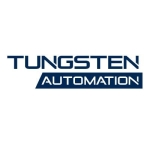What is our primary use case?
We use attended and unattended bots, Orchestrator, and Studio for development.
We're seeing increasing adoption of Studio because more people see how easy and straightforward it is to use a lot of the features. It helps that UiPath training is free. Our entire team, including our salespeople, have gone through the training. It's free and it makes a big difference. For the salespeople, they're able to talk more intelligently about RPA.
On a scale of one to five, judging how beneficial it is, I would rate the training a five, for sure. In fact, I have taken a lot of ideas from their training to educate my customers about RPA. When it comes to RPA, a lot of it is education because some of them don't know exactly how automation can be done. I've told UiPath that I use their training in my presentation, and it is great.
We are working with a technology company called Rammer, Rammer.ai. What the Rammer software does is listen to conversations to learn the details of what is being discussed. A third-party system is used to transcribe the conversation into text, then Rammer will learn the details without much training. It knows the topics, it understands what is talked about the most, talked about the least, how much we are adhering to the script if it's a call center use case, or if it is a simple meeting use case then it knows who is assigned what tasks, it recognizes the follow-ups, and it knows the summary of the discussion. All of this is summarized in a nice, consumable manner. So now, when a bot knows all of this information, it goes into Orchestrator, logs all these activities that are picked up by unattended bots downstream, and they trigger all those processes back. So it's a massive consumption of all of those heavy use cases.
We have not yet run automations in a virtual environment, although we do have customers who are asking for it. We are not sure if we will need UiPath's help for this yet because we haven't tried it.
With respect to how easy it is to automate our company's processes, on a scale of one to five, I would rate it a five. Really, it depends on how clearly we understand the requirements. So a lot of times we are able to find process gaps, which wasn't the case earlier before we started thinking about automation in this manner. I would say the ease of use is actually dependent on some of those factors as well.
Usually, starting is the biggest challenge for most people, and I think this is because it is in a trial environment and there is a lack of documentation, with multiple people doing one part of a small subset of a task. There are these challenges and then if none of them are documented, you need to figure out the process flow. From person one, where does it go? This can change when people can do multiple things.
It becomes a very complex web to understand and navigate through. We need to understand the task and how it should be performed. For developing the robot, it's very important to have the clarity upfront, otherwise, we cannot code them. That is the biggest challenge, I feel.
From the point that a UiPath license is purchased until the first bot is ready is almost immediate. This is because we usually start with a PoC on a small scale, just to see if automation with this approach makes sense. By the end of the PoC, we'll normally know exactly how many bots are needed. Sometimes it is on us, more than the customer when we cannot estimate every process that is outside of the departments and division that we work with because we just work at finance. For example, we can't just estimate what marketing would use, and so on. That will sometimes delay things.
What is most valuable?
The attended and unattended classification and simplicity are great, and it's easy to explain to people. Right off the bat, the task performing the lowest granular entity is very clearly defined, which is something that I like.
I really like that I am able to tell the story, using Orchestrator, how humans work, how bots work, and how humans and bots work together. Orchestrator really tells a lot more than just being a simple task manager.
What needs improvement?
In future releases of this solution, I would like to see more packaged solutions.
We would like to see intelligence built into the core. Specifically, we would like to see the recognition of human to human conversations. That intelligence would be great because we have some very important use cases in that space that we are seeing. Our focus is moving closer to one hundred percent in that space, as all of our new work is related to conversations.
UiPath should offer an on-demand cloud-type model where you can get bots for five minutes, ten minutes, an hour, or whatever duration you need.
What do I think about the stability of the solution?
With respect to the stability, on a scale from one to five, I would rate this solution a five.
We don't see many failures, and this is partly because of our approach. We start by creating something called a heat map, which I learned in some of the training from UiPath. The training clearly explains how to handle errors. It includes which process to automate fully and which processes should be automated partially, with a human in the loop.
We start with the right approach. We understand the process and we have the heat mapping that gives us full clarity of where the exception flows are and how to handle them. So when you do that, it becomes second nature to handle those exceptions. We are pretty comfortable, and we are applying the best practices, which adds to the stability.
Buyer's Guide
UiPath Platform
October 2025
Learn what your peers think about UiPath Platform. Get advice and tips from experienced pros sharing their opinions. Updated: October 2025.
872,922 professionals have used our research since 2012.
What do I think about the scalability of the solution?
Talking about our own people, we have roughly sixty-five who are either developers or architects. For our customers, the number is growing all the time. The requests for training and setting up workshops for them comes to us every week, basically from different customers. We don't know the extent of automation beyond the people we work with because there are other vendors like us who are also there, so we don't have the exact number but what is refreshing to see is that even VP level or senior-level employees are interested in learning. They ask us if we can hold a workshop for their entire team, whether they're doing the development of bots or not. Hopefully, that will increase the numbers, but right now I don't have an estimate on the total number of customers. I only know on our side.
How are customer service and support?
We have tremendous support from UiPath. We can say that from our perspective, we are very fortunate to be in the Pacific Northwest and that team is one of the best. It doesn't matter if we are big or small, they help everyone. So every time we have an issue or a challenge, whether it's engineering, presales, architecture, or development, we get all the support.
Which solution did I use previously and why did I switch?
Our customers usually don't know much about RPA, so one of our jobs is to educate them on it to get them interested. Gradually when they understand, it moves forward.
How was the initial setup?
In the majority of cases, the initial setup of this solution is simple to medium in terms of complexity. We are finding very few complex scenarios at the moment.
I think the overall architecture is simple. It is very clear and very straightforward. UiPath's product team is doing a great job in is creating a lot of very out of the box integrations and analytics, and that always helps. That is good, but I think if people are not trained yet and they think that it's easy, drag-and-drop, and simplistic, those folks struggle a lot.
We've seen that people think "Oh yeah, it's just some scripts and drag and drop so we can do this easily" and that misconception exists. We don't treat it as an easy scenario, so we gave it all the respect that proper Python code, a data science problem, or a highly complex situation deserves. When you approach it that way, it's at best at a medium complexity.
In general, we treat it right in the middle. It's not that straightforward, but the architecture is simple enough that the development complexity is medium. That's the simple and medium combination.
What was our ROI?
When it comes to ROI, for some scenarios it's immediate on the day you go to production. Doing the math, if it is automating thirty hours of work in a week, it is going to be the moment you turn on the switch.
Sometimes when the expectation is set at a different level, the KPIs are different. It may be that the customer is looking to have an "X million" dollar cost saving. It just depends on how you're defining the KPIs. So in those scenarios, obviously it'll build up to that saving.
A lot of people talk about the total cost of ownership as being a real saving or real value for products. So there are just all these different layers of complexity in that. I mean in theory it is immediate at the moment you turn on the switch, but then you need to consider the bigger picture, and it's not a straight answer. It'll be different.
What's my experience with pricing, setup cost, and licensing?
The most important tip that I would share with respect to the licensing is that you should not think of a bot as being able to do only one thing. You should always consider the downtime and utilize the bots properly. That's the way you can have exponential ROI from just that one simple investment.
Even though these bots don't really cost much, you still want to say there are resources like a dedicated machine that is there, there are electricity and all kinds of resources that also go into it. So the overall cost, we should look at that. If a bot is doing ten hours' worth of work in five minutes, there are twenty-three-plus hours work that the bot can actually do. So, think of orchestration.
Which other solutions did I evaluate?
Some of our customers have tried different solutions. There are some customers who have even tried a lot of competing products and they're not satisfied. They have a very low expectation from what automation should or could do. So for us, that's even harder in terms of educating them.
People who don't know anything about this kind of automation, sometimes it's a little bit simpler to just run them through an hour or two of our workshop, but people who already know about it may have set their mind in a certain manner. Sometimes for those customers, the customers with experience in other solutions, are usually a little bit more difficult to convince. They have doubts that have come about because of whatever they've been using, and they don't fully understand the capabilities because UiPath does things very differently from others.
So on both ends, education is a challenge.
What other advice do I have?
We are very excited about the new things that have been announced recently. There is the integration with AI, with AI fabric. There is Studio X, which has pre-built APIs with Microsoft Office and all the other Salesforce integrations that they've come up with. These are very exciting because that will increase adoption even more. People already understand unattended and attended automation, and now with Studio X being available so easily, and with analytics being part of its fabric, it's going in the right direction.
We have a very nice step-by-step flowchart that explains how to approach or what processes to automate first of all, and what are the chances of change or variations and all of that. While we are developing this, we at least are following the best practices from all the training that we received to ensure that we have taken that int consideration and we have not picked the process that is hard to automate, or which should not be automated. Then, it's more of a system change or any transformation that the customer should do first and then do automation. Basically, we should not do automation for the sake of it.
At my company, we don't work with any other RPAs. When it comes to customers choosing this solution, it should depend on the use case. If there is a strategic advance that they need to get and they need to really think of analytics and intelligent automation, UiPath makes a very compelling case. I think that it is important to choose your solution wisely and do it based on your use cases.
From a cost perspective, there is a big difference between the attended and unattended bots. One is twenty-five percent the cost of the other, which is a massive difference. Our customers use both, and we like this a lot because the way we utilize attended and unattended bots are the right way to do it. If you need to do multitasking and handle a lot of tasks, the choices vary.
Specifically from a pricing point of view, I think it is justified. When I first heard the price, and obviously I didn't ask about the duration or subscription levels, I thought it was a monthly price. Hearing that, I thought that it was cheap. Later, I was told that it was an annual fee. So for me, I understand that my customers can afford this price, and I am happy with that.
I would rate this solution a ten out of ten.
Which deployment model are you using for this solution?
On-premises
Disclosure: My company has a business relationship with this vendor other than being a customer. Partner.

















